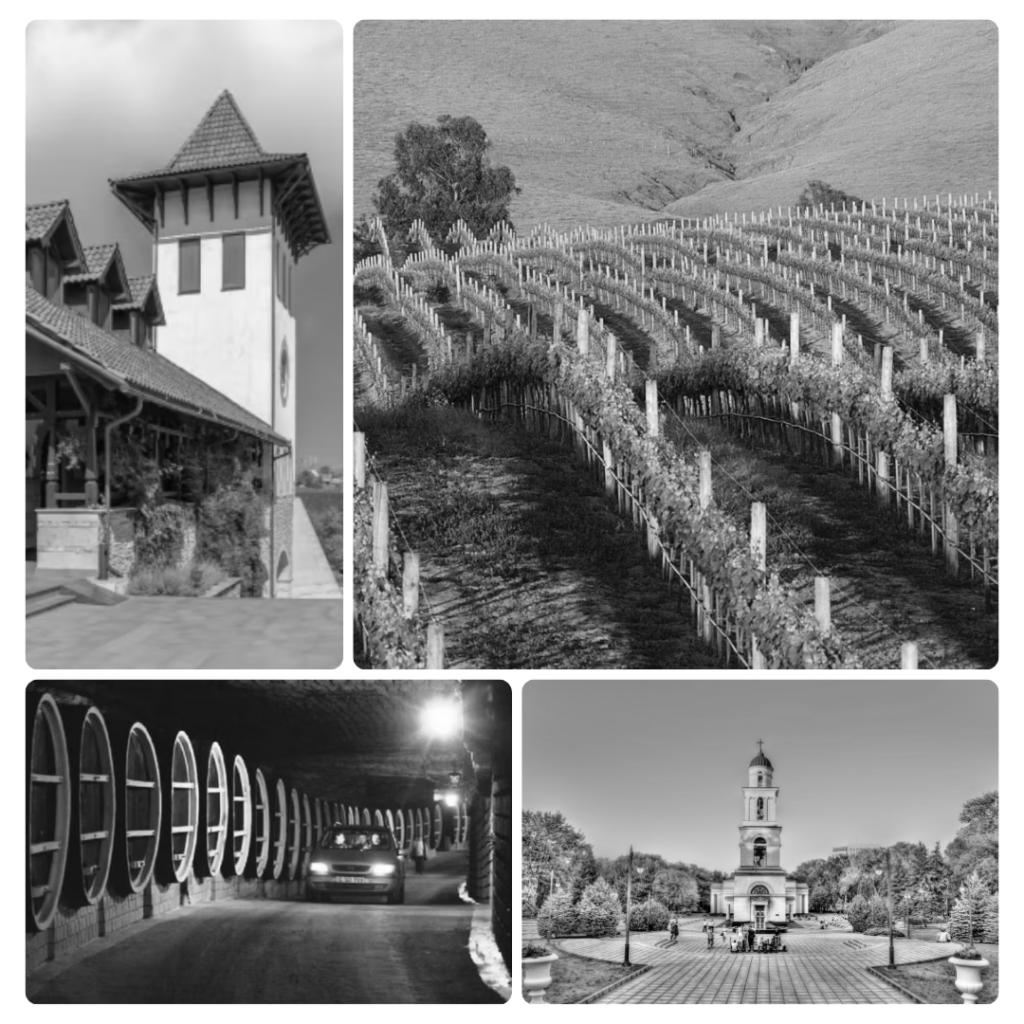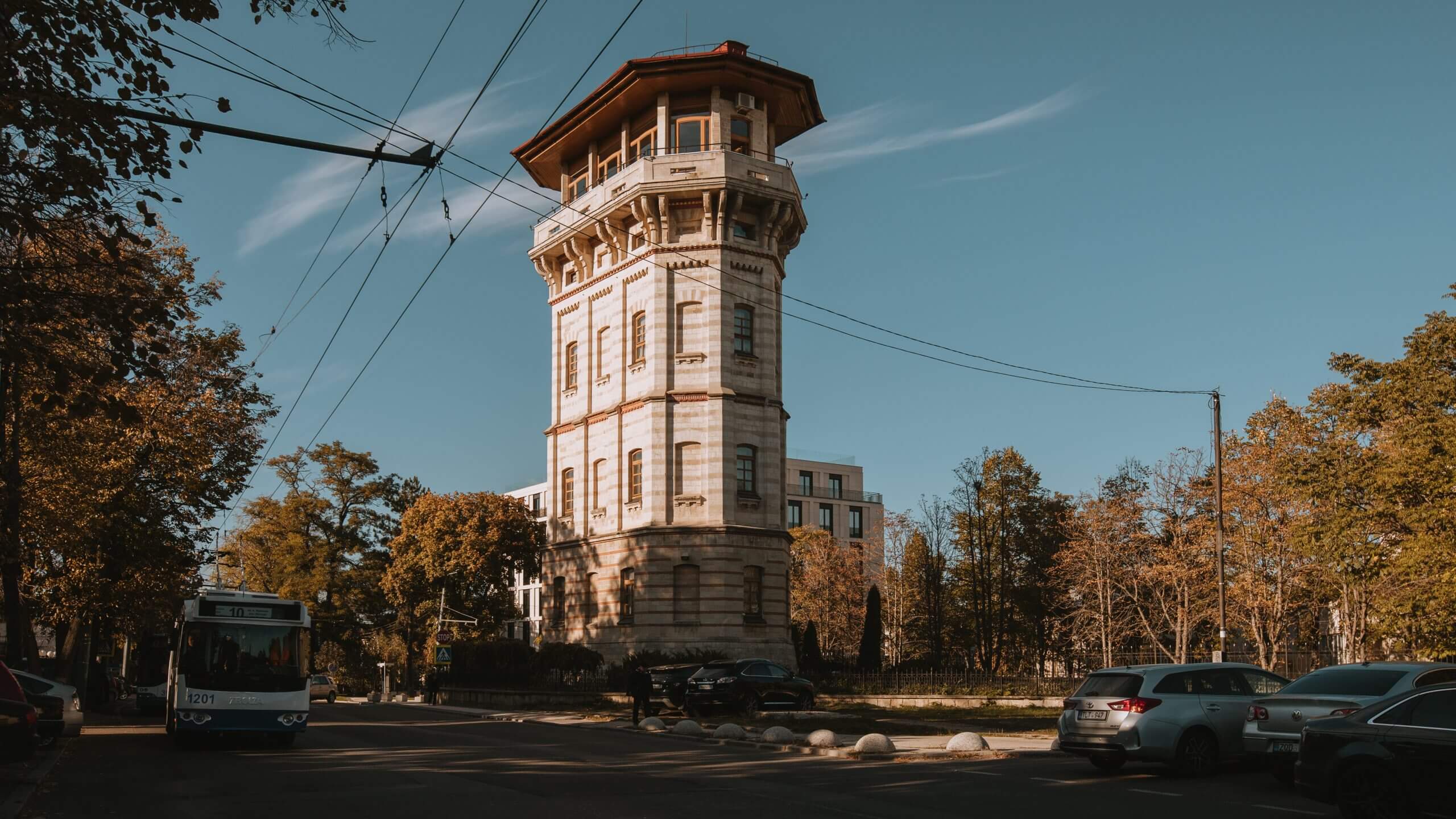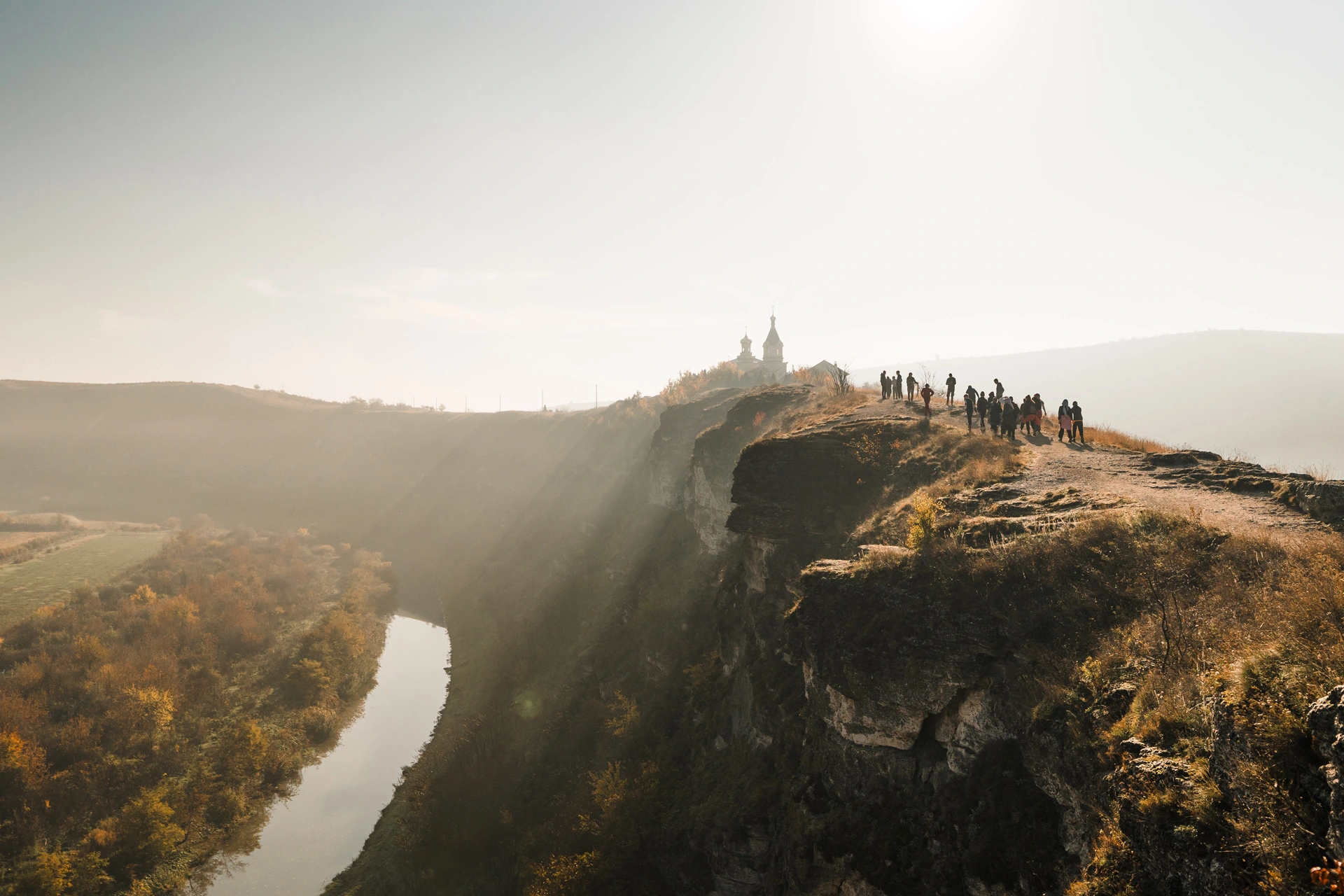Activities
To help you explore and enjoy the beauty of this country, we’ve created a map with recommended places to visit. Below, you’ll find details about each monument or museum, so you can choose what you’d like to discover during your trip to Moldova.

Chișinău

Valea Morilor Park
Just a 20-minute walk from the city center, Valea Morilor Park is a peaceful oasis and one of the most beautiful places in Moldova. Enjoy the fresh air and watch locals jogging, rowing, fishing, or feeding the ducks.
Fun Facts:
- The park’s lake was manually dug in 1950 by local youth and Komsomol members using only shovels.
- In 2009, Moldovan archaeologists discovered rare mammoth bones at the bottom of a former lake in Valea Morilor, revealing that the area was once an ancient mammoth habitat.
Hidden in Valea Morilor Park, this charming 11 cm bronze statue is the smallest monument in Moldova. You can find it on “Planet B-612” – the 23rd decorative sphere along the balustrade, near the main entrance on Grigore Alexandrescu Street.
At the lower end of Valea Morilor Park, this monument dedicated to the founders of communism is a relic of Moldova’s Soviet past. Originally built in 1949, the statues were placed in front of the Government House but were relocated in 1991 after Moldova’s independence.
Chișinău Water Tower
A true architectural gem, the Water Tower offers stunning panoramic views of the city and the lake, especially at sunset. Located on Mitropolit Bănulescu-Bodoni Street, the tower also houses the Chișinău History Museum, showcasing artifacts from the 15th–20th centuries (most information is available only in Romanian).
Fun Facts:
- Built in the late 19th century by architect Alexandru Bernardazzi, the tower was originally used to supply water to the city, with a capacity of 2,000 tons per day.
- After surviving earthquakes and multiple repurposings, the tower was reopened as a museum in 2011, with an elevator added during renovations.
Nativity Cathedral of Chișinău
A masterpiece of neoclassical architecture built in the 1830s, the Nativity Cathedral is the spiritual heart of the Orthodox Church in Moldova. Located on Chișinău’s central boulevard, the cathedral symbolizes the faith and resilience of the Moldovan people.
Fun Fact:
- After surviving bombings during World War II and communist-era desecration, the cathedral was fully restored in 1997, regaining its iconic zinc dome and bell tower.
Triumphal Arch of Chișinău
An iconic symbol of Chișinău, the Triumphal Arch is a must-see attraction—impossible to miss on the city’s main boulevard! Built in 1840 to celebrate Russia’s victory over the Ottoman Empire, the arch was later restored during the communist era, reflecting Moldova’s long history of foreign influences and its path toward a distinct national identity.
Dendrarium Park
A botanical paradise opened in 1973, home to over 1,000 tree species, including rarities like Ginkgo biloba and Douglas fir, along with a spectacular rose collection—the true gem of the park. Nestled among serene lakes and streams, this protected natural monument offers breathtaking landscapes and unique ecosystems, making every visit feel like a journey around the world.
Alley of Classics
An open-air museum located in Ștefan cel Mare Park, inaugurated during Khrushchev’s period of détente on April 29, 1958. Inspired by Cișmigiu Gardens in Bucharest, the alley features 28 red granite busts of Moldova’s literary and political figures, led by a statue of Alexander Pushkin. Among the notable personalities represented are Ion Creangă, Dimitrie Cantemir, Mihail Sadoveanu, and others.
Museums

National Museum of Fine Arts of Moldova
The National Museum of Fine Arts of Moldova, located in the heart of Chișinău, impresses with its historic building and fascinating collections that reflect the evolution of art from the 15th to the 21st centuries. Here, you will discover a unique blend of European, Russian, and Oriental art, displayed in a setting influenced by Florentine Gothic. Each room tells a story, offering a visual journey through time and diverse artistic styles.
Fun facts:
- The museum is housed in a former girls’ school, and its building was also used by the Communist Party and the Pioneer Palace.
- In the basement of the museum, traces of an old cellar were discovered, suggesting that the place hides other historical secrets.
“Alexander Pushkin” House-Museum
The “Alexander Pushkin” House-Museum in Chișinău is one of the few places in the world where you can follow the footsteps of the great Russian poet, exiled here by the Tsarist administration. The building, an authentic historical monument, preserves the atmosphere of the times when Pushkin wrote some of his masterpieces. Visitors can discover original 19th-century objects and fascinating details about the poet’s time spent in Bessarabia.
Fun facts:
- It is one of only two houses in the world where Pushkin lived, the other being in St. Petersburg.
- It is here that he began writing his famous poem “Eugene Onegin,” partly inspired by his exile in Chișinău.
National Museum of History of Moldova
The National Museum of History of Moldova is the perfect place for history enthusiasts, offering a captivating dive into the country’s past, from ancient times to the 20th century. Located in a historic building in Chișinău, the museum houses impressive collections of artifacts, documents, and interactive exhibits. Major attractions include the “Soviet Moldova” exhibition and the “Treasures” exhibition, which reveals treasures made of precious metals.
Fun facts:
- It hosts over 300,000 exhibits, illustrating Moldova’s evolution over the millennia.
- The diorama “Operation Iași-Chișinău” is one of the largest in Eastern Europe and offers an impressive perspective on historical events.
National Museum of Ethnography and Natural History
The National Museum of Ethnography and Natural History is the oldest museum in the Republic of Moldova and offers a fascinating journey through the relationship between humans, nature, and culture. Its permanent exhibition, “Nature. Man. Culture.”, covers an area of over 2,000 m², captivating visitors with diverse artifacts and impressive scenography. Additionally, the museum hosts temporary exhibitions, workshops, and cultural events, showcasing both local and international traditions.
Fun facts:
- The museum has a vivarium and a botanical garden with local and exotic species, including rare birds, reptiles, and fish.
- The museum’s building, inaugurated in 1906, impresses with its eclectic architecture and unique decorative details.
Sightseeing outside Chișinău

Old Orhei
Just 45 minutes from Chișinău, Old Orhei is Moldova’s most iconic historical and natural site. Explore the mysterious cave monasteries, medieval ruins, and spectacular rock formations along the picturesque Răut River valley.
Fun Facts:
- The site’s history spans over 2,000 years, from the Dacian tribes to the reign of Stephen the Great.
- The cave monastery, carved into limestone cliffs, has been a place of prayer since the 13th century and offers breathtaking views.
Château Vartely
Located near Orhei, just 45 km from Chișinău, Château Vartely is a premium tourist complex celebrating Moldova’s winemaking tradition. Perched on a limestone hill, it offers stunning views and an unforgettable cultural experience.
Fun Facts:
- The name “Vartely” comes from “Orhei”, meaning “fortress place” in Hungarian, reflecting the region’s rich history.
- The estate blends modern wine production with tradition, offering guided tours, tastings, and an impressive collection of local and international wines.
OrheiLand
OrheiLand is the largest amusement park in Moldova, spanning 20,000 m² and offering excitement for visitors of all ages. From thrilling rides to peaceful green areas, it’s the perfect destination for fun and relaxation.
Fun Facts:
- Opened in the 2010s, OrheiLand quickly became a top tourist attraction, sometimes even more popular among adults than children!
- Major attractions include an upside-down house, a jungle zone with towering vines and suspended bridges, and a water park featuring slides, waterfalls, and pools.
Cricova Winery
A true gem of Moldovan winemaking, Cricova Winery is world-famous for its exceptional wines and vast underground limestone cellars. Known as the “Pearl of Moldovan Winemaking,” Cricova combines centuries-old traditions with modern excellence.
Fun Facts:
- Cricova houses a 120-kilometer labyrinth of galleries, recognized as a national cultural heritage site and attracting over 50,000 visitors annually.
- It is the first Moldovan winery to produce sparkling wine using the traditional French “Méthode Traditionelle,” following the technique of the legendary monk Dom Pérignon.
Mileștii Mici Winery
Step into the underground wine city of Mileștii Mici, holder of the Guinness World Record for the largest wine collection in the world, with over 1.5M bottles stored in 55 Km of underground tunnels. Located near Chișinău, this iconic winery offers guided tours and unforgettable tastings of Moldova’s finest wines in its cool, cobweb-covered cellars.
Fun Facts:
- The underground streets are named after grape varieties, such as Cabernet and Feteasca, giving visitors the feeling of walking through a wine map.
- Some of the oldest bottles date back to the 1980s and are stored in naturally cooled vaults, preserving their rich history and aroma.
Purcari Winery
Nestled between the Nistru River and the Black Sea, Château Purcari is a stunning blend of history, tradition, and natural beauty. Known for its award-winning wines, this legendary estate has been producing exceptional wines since 1827, including the famous Negru de Purcari (Purcari Black), once served at royal tables across Europe.
Fun Facts:
- Purcari’s underground cellars, built in the 16th century by monks, are cross-shaped to bless the wines stored inside.
- Queen Elizabeth II’s personal collection included a 1987 Purcari wine with English-labeled bottles.
Curchi Monastery
Located just 33 km from Chișinău, Curchi Monastery is a masterpiece of Baroque architecture and an important spiritual landmark. The “Nativity of the Mother of God” Church, its central piece, boasts Moldova’s tallest bell tower at 57 meters and draws inspiration from Kyiv’s famous St. Andrew’s Church.
Fun Facts:
- The monastery was transformed into a psychiatric hospital during the Soviet era but was fully restored starting in 2005.
- Its magnificent frescoes and domes make the main church one of the most photographed attractions in Moldova.
1-day-trip
Morning: Orheiul Vechi
Start your day with a visit to Orheiul Vechi, Moldova’s most iconic historical and natural landmark, located just 45 minutes from Chișinău. Enjoy panoramic views and immerse yourself in over 2,000 years of history.
Lunch: Château Vartely
Head to Château Vartely, a premier winery located 10 minutes from Orheiul Vechi. Relish a wine tasting featuring both local and international varieties paired with Moldovan cuisine. Take in the breathtaking views from the estate’s hilltop location.
Lunch spot: Dolce Vita – Here you will be able to find all the traditional dishes from the Moldovan cuisine. The food is absolutely delicious!
Afternoon: OrheiLand
Continue your trip with some lighthearted fun at OrheiLand, Moldova’s largest amusement park. From an upside-down house to lush green spaces and a water park, it’s a great way to relax and enjoy a mix of entertainment and leisure.
Evening (4 PM maximum): Cricova Winery
Just outside Chișinău. Explore the vast 120-kilometer labyrinth of underground cellars, famous for storing some of the finest wines in Moldova.
Return to Chisinau

Morning: Visit Saharna Monastery (1:35hr drive from Chisinau)
Admire the beautiful architecture and serene atmosphere of the Holy Trinity Monastery. A short hike leads you to the stunning Saharna waterfall, often referred to as the “Bride’s Veil.”
Afternoon: Tipova Monastery
Located near Saharna, this is another ancient cave monastery perched above the Dniester River. It is known for its dramatic location and peaceful surroundings.
Evening: Dniester River Scenic Views
Enjoy the views of the winding Dniester River along the journey. Some small viewpoints offer great photo opportunities.
Return to Chisinau

